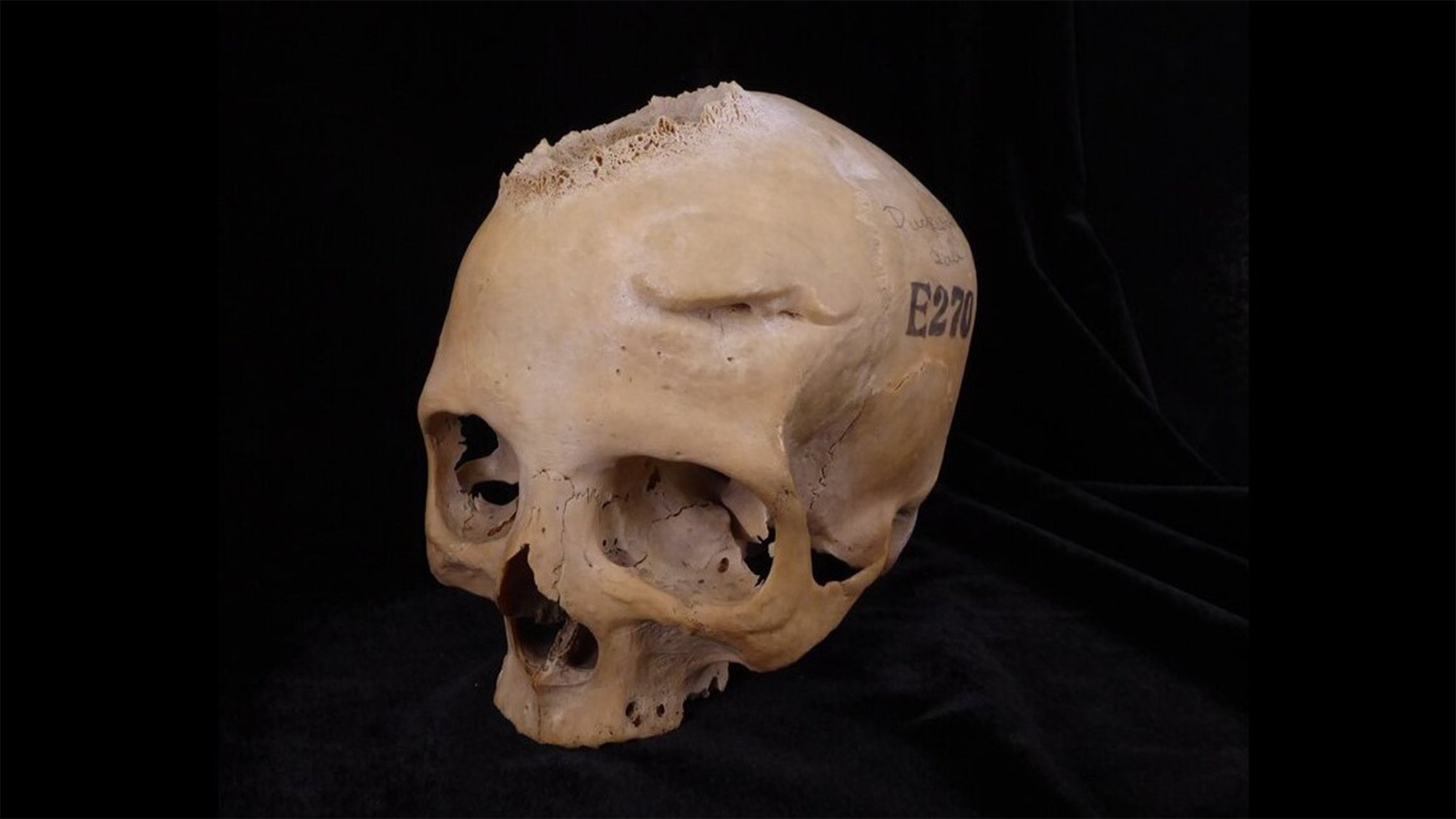

Thousands of years ago, ancient Egyptians were performing some medical treatments similar to some that doctors still perform today. Text and archeological evidence reveal that they could build prostheses and fill dental cavities. Ancient Egyptians may have also tried to treat brain cancer, albeit without the benefits of strong anesthetics and other major medical advances. In a study published May 29 in the journal Frontiers in Medicine, an international team of scientists describe how they uncovered evidence of attempts at surgical procedures in two 4,000 year-old human skulls.
“We see that although ancient Egyptians were able to deal with complex cranial fractures, cancer was still a medical knowledge frontier,” Tatiana Tondini, a study co-author and researcher at the University of Tübingen in Germany, said in a statement. “We wanted to learn about the role of cancer in the past, how prevalent this disease was in antiquity, and how ancient societies interacted with this pathology.”
[Related: This teen mummy was buried with dozens of gold amulets.]
In the study, the team examined two skulls that are held in the University of Cambridge’s Duckworth Collection. Skull and mandible 236 dates back from between 2687 and 2345 BCE, and belonged to a male individual between 30 to 35 years-old. Skull E270 dates from between 663 and 343 BCE and belonged to a female individual who was over 50 years of age.
A large lesion consistent with excessive tissue destruction–a condition called neoplasm–was present on Skull 236. There were also about 30 small and rounded metastasized lesions scattered across the entire skull.

Surprisingly, they also found various cut marks around these lesions. They believe that the cut marks were likely made by a sharp object, potentially a metal instrument.
“It seems ancient Egyptians performed some kind of surgical intervention related to the presence of cancerous cells, proving that ancient Egyptian medicine was also conducting experimental treatments or medical explorations in relation to cancer,” Albert Isidro, a study co-author surgical oncologist at the University Hospital Sagrat Cor in Spain, said in a statement.

Skull E270 had a large lesion likely was a cancerous tumor that led to bone destruction. According to the team, this could be a sign that cancer was a common pathology in ancient times. Skull E270 also had two healed lesions from traumatic injuries. One of the injuries appears to have been a close-range violent event with the assailant using a sharp weapon. These healed lesions may mean that the individual could have received some kind of treatment and survived as a result.
However, seeing a wound like this on a female specimen is uncommon, since most violence-related injuries in archeology are found on male skeletons.
“Was this female individual involved in any kind of warfare activities?” asked Tondini. “If so, we must rethink the role of women in the past and how they took active part in conflicts during antiquity.”
[Related: A 31,000-year-old grave in Indonesia holds the earliest known amputation patient.]
Studying skeletal remains like these come with several major challenges that make it hard to definitively state what happened. Remains are often found incomplete and typically do not come with any known clinical history. More studies on other specimens could help untangle more of the ways that ancient societies dealt with cancer.
“This finding is unique evidence of how ancient Egyptian medicine would have tried to deal with or explore cancer more than 4,000 years ago,” Edgard Camarós, a study co-author and paleopathologist at the University of Santiago de Compostela in Spain, said in a statement. “This is an extraordinary new perspective in our understanding of the history of medicine.”
